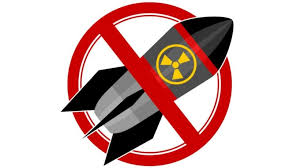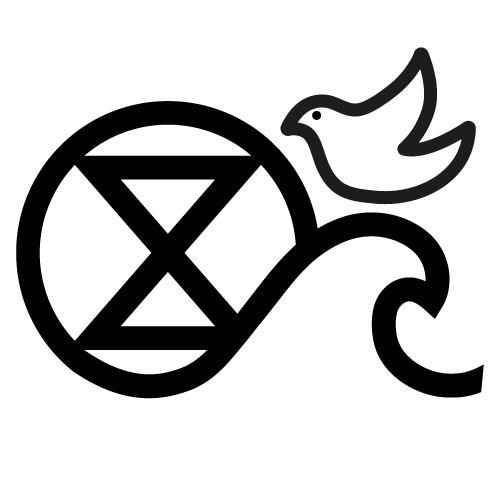The Nuclear Nonproliferation Treaty (NPT) |
 |
The Nuclear Nonproliferation Treaty, which came into force in March 1970, is designed to stop the spread of nuclear weapons.
The 190 states parties are split into two categories --
Nuclear-weapon-states (NWS) - US, Russia, China, France and UK.
-
Non-nuclear-weapon-states (NNWS).
The treaty requires --
All nations to pursue disarmament
-
NNWS nations must not develop or acquire nuclear weapons.
-
All nations to have access to nuclear technology for peaceful purposes, with safeguards.
Only India, Pakistan, Israel, North Korea and South Sudan are still refusing to sign.
In 1991 South Africa signed the treaty. The South African government confessed that it had secretly built six
nuclear weapons, but destroyed them before joining the NPT.
In 1992 Belarus, Kazakhstan and Ukraine joined as NNWS nations. All had had nuclear weapons while they were Soviet
Republics.
The widespread adoption of the Treaty for the Prohibition of Nuclear Weapons should provide an opportunity for reinforcing the NPT.
|
The INF Treaty |
 |
At the height of the Cold War US nuclear weapons were based at Greenham Common and Molesworth, making the UK
a prime target in the event of nuclear war.
In 1987, partly in response to peace campaigners, Ronald Reagan, the US President, and Mikhael Gorbachev,
the Soviet leader, signed the bilateral
Intermediate-Range Nuclear Forces (INF) Treaty. This led to the
destruction of 2692 cruise, Pershing and SS20 missiles with a range of 500 to 5500 kilometres 310-3400 miles), and to US
nuclear missiles being removed from British soil in 1991. Unfortunately it also permitted the
construction of the Trident missile system: submarines at sea equipped with
nuclear missiles. |
INF Treaty expired |
 |
The INF Treaty
expired on 2 August 2019. Neither Donald Trump nor Vladimir Putin was
willing to renew it.
This leaves the US and Russia free to resume the production and deployment of intermediate range missiles,
threatening a renewed arms race. Missiles launched from the US would not reach Russia, and vice versa;
so the US would look to site them in Europe, and probably in the UK.
|
The Open Skies Treaty |
 |
The Open Skies Treaty, signed in 1992, permitted signatories to carry out unarmed reconnaissance flights over
each other's territority, enabling them to keep an eye on military preparations thus allaying mutual suspicions.
On 22 November 2020, the United States withdrew from the treaty, and in December 2021 Russia also left, citing the U.S. withdrawal and the inability of member nations to guarantee that information gathered would not be shared with the US.
|
The New Strategic Arms Reduction Treaty (New START) |
 |
New START, which was signed in April 2010
and came into force in 2011, replaced the 1991 START I treaty.
The United States and Russia agreed on Feb. 3, 2021, to extend New START by five years, as allowed by the treaty text, until Feb. 5, 2026.
It is a bilateral treaty in which Russia and the US agreed to limit the number of nuclear warheads
and launchers, including Trident submarines. It does not cover missile defence programmes,
previously included in the INF Treaty.
|
The Comprehensive Nuclear-Test-Ban-Treaty (CTBT)
|
 |
The Comprehensive
Nuclear-Test-Ban-Treaty would prohibit a nation from permitting or carrying out nuclear
test explosions, whether civilian or military.
The treaty was adopted by the General Assembly of the United Nations in September 1996, after years of negotiation.
It will not enter into force until 180 days after the 44 states listed in Annex 2 of the Treaty have ratified it.
These Annex 2 states are the ones that took part in the CTBT negotiations between 1994 and 1996, and that
possessed nuclear reactors in those days.
The following have still not signed: India, North Korea and Pakistan. All three have carried out nuclear test
explosions since 1996.
The following Annex 2 states have signed but not ratified the treaty: China, Egypt, Iran, Israel and the US.
However it has been reported that the US may intend to resume nuclear testing.
|
The Treaty on the Prohibition of Nuclear Weapons |
 |
The 2017 Treaty on the Prohibition of Nuclear Weapons (TPNW)
was adopted by 122 Member States of the
United Nations on 7 July 2017. It was opened by the Secretary General of the United Nations, for signature,
on 29th September 2017.
On 24th October 2020 the Treaty just reached the 50 ratifications needed for entry into force! 90 days later -
on 22 January 2021 - the TPNW entered into force and became binding international law!
The Treaty prohibits signatories from developing, testing, producing, manufacturing, transferring, possessing,
stockpiling, using or threatening to use nuclear weapons, or allowing nuclear weapons to be stationed on their
territory. It also prohibits them from assisting, encouraging or inducing anyone to engage in any of these activities.
It includes landmark obligations for states-parties to assist victims of nuclear weapons use and testing and a
start to remediation of environments contaminated from nuclear weapons use and testing.
It creates a new international standard for nuclear weapons: they are now illegal under international law.
Previous weapons prohibition treaties such as the Chemical and Biological and Anti-Personnel Mine Ban Conventions
prove that it is possible to shame countries into compliance even without official endorsement. Weapons possessors
that have not joined the treaty cannot escape its influence. |
Threats to the TPNW |
 |
The battle over the introduction of the TPNW raged in the UN for over three years.
Accident, miscalculation or
design faults were seen as the main threats to be addressed.
At first all 9 nuclear powers boycotted the process. The US attempted to block TPNW by sending out letters to all signatories to withdraw. Russia, US, UK and France
remained united against it, but in contrast China tweeted, “we have always been advocating complete prohibition
and we make a continuous efforts towards a nuclear weapon free world”.
False claims that TPNW is a threat to the Nuclear Non-Proliferation Treaty (NPT) abound, whereas actually they
are completely compatible.
The people's view is often very different from their governments'; for example surveys show that over 70% of
Australians, Norwegians, Swedes, Japanese, Finns and Italians and 65% of Americans are now in favour of TPNW.
Many supporting programmes such as Don't Bank on the Bomb are becoming ever more significant, and for instance 400 cities in the world, (including Hastings on 21 October 2020), have endorsed TPNW, indicating
a groundswell of popular opinion in favour of its adoption.
Global financial institutions, bound by international law and keen to establish themselves as responsible
investors, will be increasingly hesitant about investing in these 'controversial' weapons now they have been
delegitimised by the majority of nations. Countries signatory to the treaty will be obliged to refuse any
sort of assistance to nuclear-armed states in respect of these weapons.
This already rules out nuclear arrangements in existing alliances such
as NATO and the Asian nuclear alliance of Japan, South Korea and Australia. So far, countries in such alliances
have not joined the TPNW, because if there were for example a major power confrontation in Asia, the TPNW would
prohibit a state from calling upon a nuclear power to threaten action on their behalf; this would effectively
neutralise their nuclear alliance. |



